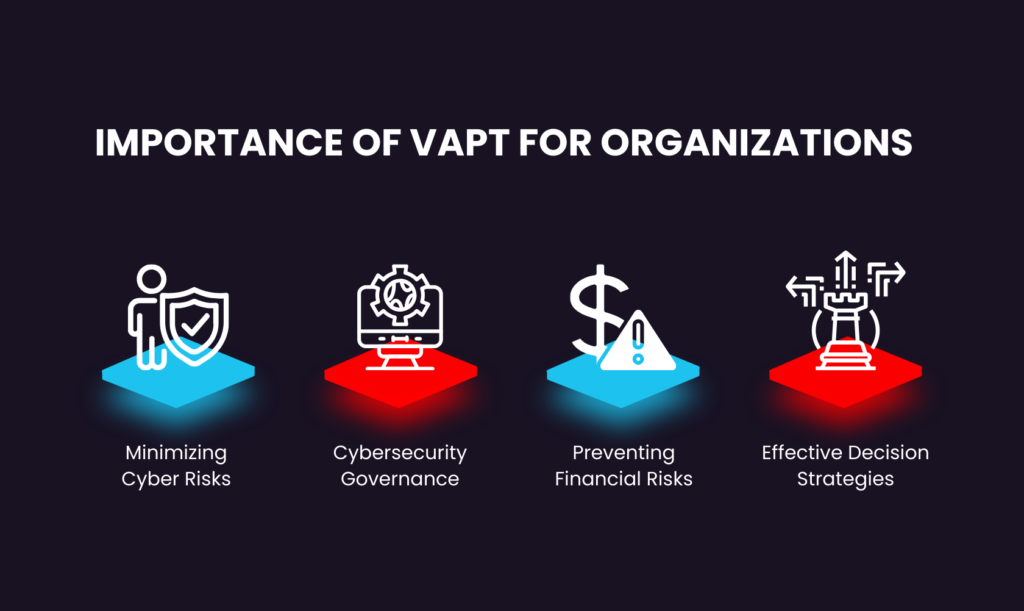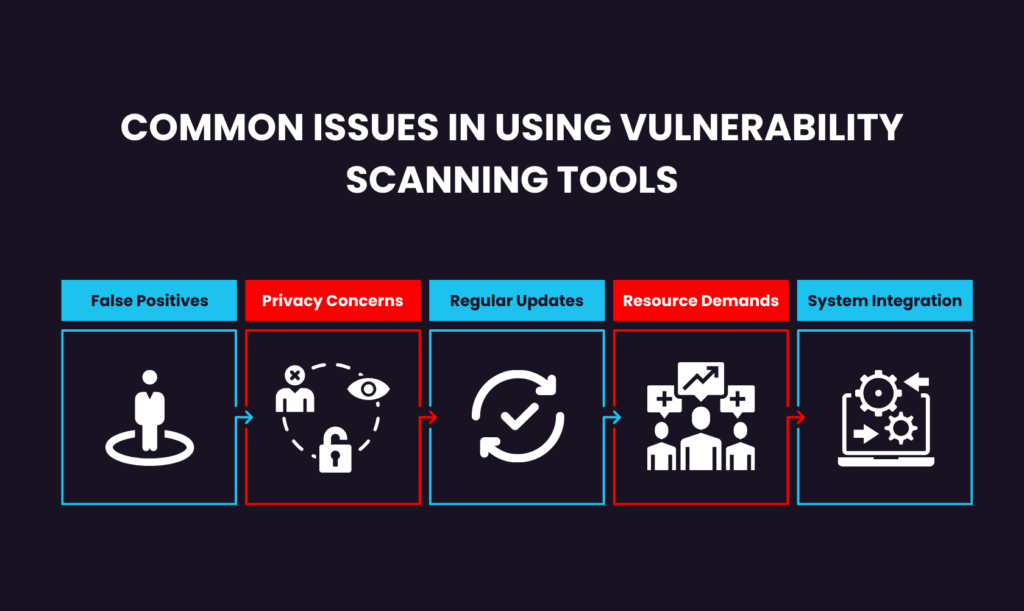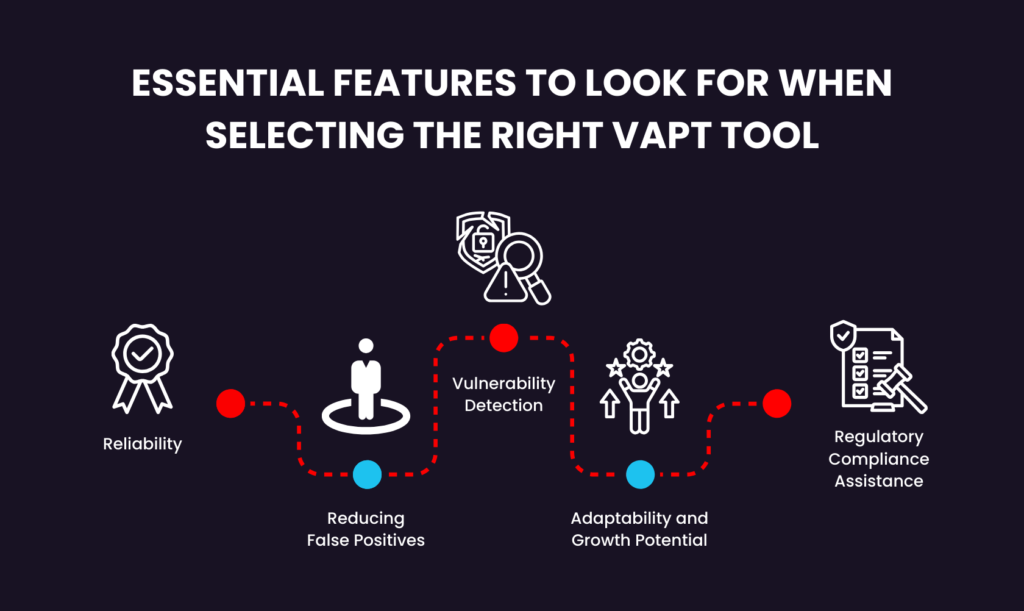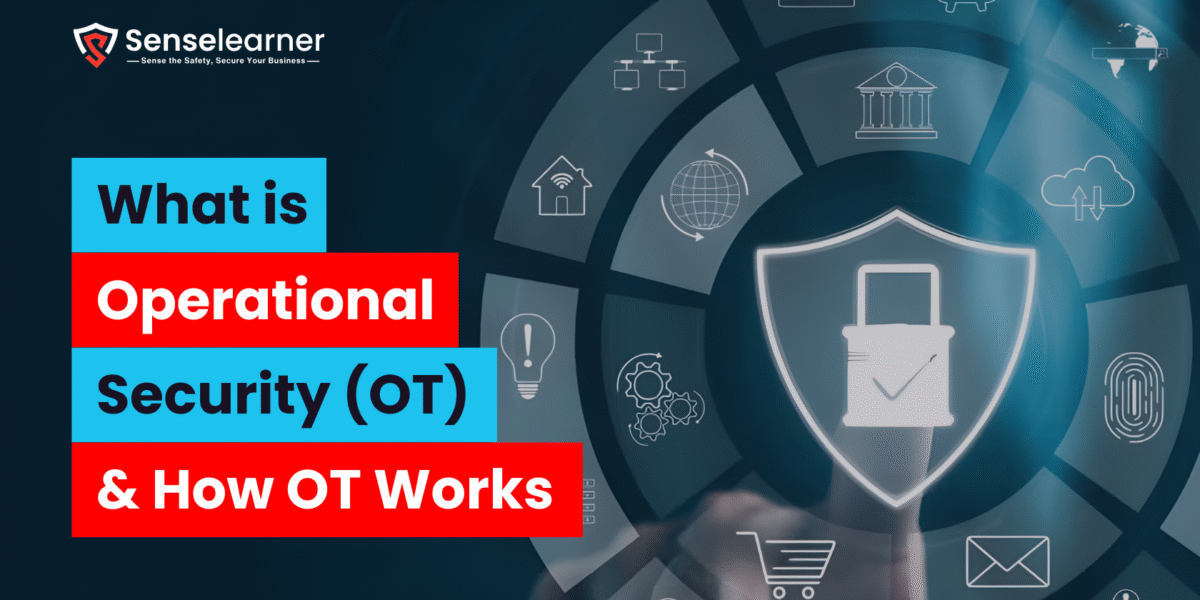Table of Contents
What is VAPT?
Explore Best 10 VAPT tools, before that first we explain what vapt is. Vulnerability Assessment and Penetration Testing (VAPT), a vulnerability assessment is the examination of your application operating numerous kinds of tools and techniques to disclose possible weaknesses; if you want, this could be attained through application safety testing tools. Well, in this, the threats are recognized, examined, and ordered as part of the process. As we can say, numerous tools are well at detecting numerous kinds of weaknesses, so it is vital not to depend exclusively on one utensil for vulnerability assessment. Can an assailant achieve access to your request via these vulnerabilities in the actual world? This is where penetration testing becomes vibrant.
So, VAPT tools are outstanding at directing out threats that may origin your request to strike and detecting technical weaknesses. But how can you detect these threats as usable? Well, penetration testing is the standard way of vigorously confronting your request to decide if possible weaknesses can be exploited. So, we have eligible the Best 10 VAPT tools. So, it will be supportive for each user to choose which one to select amongst all.
Importance of VAPT for Organizations

In the digital age, the growing threat of cyber-attacks and data breaches puts organizations under significant pressure to protect sensitive information. Consumers are also more cautious about sharing personal data and expect businesses to maintain strong security measures. To meet these demands and reduce risks, it is crucial to proactively identify and resolve system vulnerabilities. Vulnerability Assessment and Penetration Testing (VAPT) is a key component in strengthening cybersecurity defenses and safeguarding data. Let’s delve into why VAPT is essential in today’s ever-changing threat landscape.
1. Minimizing Cyber Risks
VAPT takes an active method to cybersecurity, handling possible threats beforehand they rise. By frequently measuring weaknesses and leading assessments, VAPT assists you to stay one step forward of cybercriminals, decreasing the threat of effective attacks and diminishing possible harm.
2. Cybersecurity Governance
Integrating VAPT into your business’s cybersecurity strategy allows you to accept an active method in averting cyber-attacks. By detecting weaknesses before they can be broken, you can evade the monetary and reputational significances of cyber-attacks, counting financial losses, system downtime and data breaches. This plan not only assist avert data breaches but also protects money in the extended run. Moreover, it confirms that your industry stays forward of developing risks and safeguards a more strong future.
3. Preventing Financial Risks
The financial significances of cyber-attacks can have an overwhelming and on-going effect. Outside straight financial losses, preserving client faith is similarly serious. Cyber-attacks can lead to important prices, counting system refurbishment, lawful penalties for failing to defend personal data and the defeat of client assurance and faith.
4. Effective Decision Strategies
Vulnerability Assessment and Penetration Testing (VAPT) reports are vital decision-making tools, giving more than just technical information. They assist to make a strong enhancement strategy, allowing you to create knowledgeable choices that support your complete safety scheme. The visions help as a roadmap, regulatory your business over the cybersecurity scene. By leveraging this data, you can make planned security savings, confirming strong and operative safety methods.
Best 10 VAPT Tools for Effective Cybersecurity Testing
As cyber threats evolve, adopting the right Vulnerability Assessment and Penetration Testing (VAPT) tools is vital for organizations aiming to stay ahead of emerging vulnerabilities. These tools not only help in identifying potential weaknesses but also play a crucial role in enhancing an organization’s overall digital security framework. With the appropriate VAPT tools in place, businesses can ensure their systems are fortified against evolving cyber threats.
Choosing the right tools is essential for protecting your digital assets. Below, we highlight some of the top-rated VAPT tools to bolster your organization’s security:
Web Application Penetration Testing Tools
Penetration testing for web applications is essential in simulating cyber-attacks to pinpoint vulnerabilities. By employing both automated tools and manual techniques, security experts can test web applications for exploitable flaws. This proactive approach helps prevent potential breaches, data theft, and other cyberattacks. Let’s explore some leading web application penetration testing tools that can enhance your organization’s security posture:
Securelayer7
Securelayer7 offers continuous web application penetration testing by combining automated and manual testing. This hybrid approach helps uncover known vulnerabilities in application libraries, providing an all-encompassing solution to secure web applications. It allows organizations to identify and fix vulnerabilities related to authentication issues, logic flaws, and more.
Key Features
- Offers patch verification for compliance issues.
- Generates detailed reports, including an executive summary, scope, and vulnerability insights from the OWASP Top 10.
- Provides a user-friendly interface to simplify the testing and results interpretation process.
Metasploit
Metasploit is a renowned tool designed to simulate real cyber-attacks, allowing organizations to uncover vulnerabilities in web applications, servers, and networks. It supports both automated and manual testing, drastically reducing the time and effort needed for security assessments. After completing the scan, Metasploit delivers a detailed report with identified vulnerabilities and remediation suggestions.
Key Features
- Easy to use with customizable settings.
- Runs on macOS, Windows, and Linux.
- Ideal for large network penetration tests.
Wireshark
Wireshark is a comprehensive tool that enables users to inspect network traffic and identify vulnerabilities across hundreds of protocols. It is particularly effective in monitoring web application network traffic in real-time.
Key Features
- Monitors and identifies threats in web application traffic.
- Offers troubleshooting features for network performance.
- Available for free.
Mobile Application Penetration Testing Tools
With mobile apps becoming more integral to business operations, their security has become a key concern. Mobile app penetration testing tools help uncover security weaknesses, ensuring the protection of sensitive user data and maintaining brand reputation. Here are some of the top mobile app testing tools:
Kali Linux Net Hunter
Kali Linux Net Hunter is an open-source penetration testing platform based on Android, which is designed to help security professionals conduct real-world attacks on mobile applications and devices. It provides a powerful set of tools to identify vulnerabilities in mobile apps.
Key Features
- Supports Wi-Fi injection for targeted attacks on wireless networks.
- Flexible and scalable for various mobile testing scenarios.
- Includes tools for data collection, vulnerability identification, exploitation, and post-exploitation.
Mobile Security Framework (MobSF)
MobSF is a top mobile app penetration testing tool that supports both Android and iOS platforms. It offers static, dynamic, and malware analysis, providing detailed security assessments of mobile applications.
Key Features:
- Integrates with CI/CD and DevSecOps workflows via REST APIs and CLI tools.
- Static analysis generates detailed security reports.
- Dynamic analysis allows experienced researchers to explore mobile app security in-depth.
Data Theorem
Data Theorem is a comprehensive security platform focusing on mobile app protection. It scans apps using static, dynamic, and runtime techniques to identify risks and ensure secure application environments. It also integrates with platforms like Slack and Teams to notify teams of high-risk issues.
Key Features
- One-click reporting for quick analysis and time-saving.
- Integrates with CI/CD tools to deliver automated DevSecOps solutions.
- Customizable user access roles to streamline collaboration among security teams.
API Security Testing Tools
APIs are critical for seamless data exchange between applications, but they are often targeted by cybercriminals. API security testing tools are crucial to finding vulnerabilities, preventing data breaches, and ensuring the reliability of these connections. Here are top API security tools to consider:
42Crunch
42Crunch offers a robust API security testing tool that analyses OpenAI definitions to uncover security vulnerabilities. It provides actionable recommendations for remediation and integrates with CI/CD platforms to streamline security throughout the development process.
Key Features
- Over 300 security checks, including live endpoint testing.
- Offers real-time security scoring for API endpoints.
- Integrates seamlessly with DevOps pipelines for continuous security monitoring.
Beagle Security
Beagle Security uses AI-powered penetration testing to identify vulnerabilities in web applications and APIs, including REST and GraphQL endpoints. It mimics human penetration testing techniques to improve the precision of its results.
Key Features
- Scans for over 3,000 vulnerabilities based on OWASP and CWE standards.
- Uses advanced AI to eliminate false positives and ensure accurate results.
- Automates security checks and integrates with popular CI/CD platforms.
Cloud Penetration Testing Tools
As businesses increasingly rely on cloud infrastructure, securing these environments has become essential. Cloud penetration testing tools help identify potential weaknesses in cloud-based systems, enhancing security and ensuring compliance. Below are some cloud penetration testing tools:
Astra Pentest
Astra Pentest offers a proactive cloud security solution with over 9,300 tests to uncover vulnerabilities in cloud environments. Compatible with AWS, Azure, and GCP, it ensures comprehensive cloud security with zero false positives.
Key Features
- Easy-to-use interface with CI/CD integration.
- Automated vulnerability scanning to ensure continuous protection.
- Ability to re-scan systems after remediation for validation.
Intruder
Intruder is a cloud-based vulnerability scanner that helps organizations identify and prioritize security flaws in their infrastructure. It regularly scans for potential risks and provides actionable insights to address them before attackers can exploit them.
Key Features
- Prioritizes critical vulnerabilities to focus on high-risk areas.
- Delivers evidence-based insights to improve decision-making and threat mitigation.
- Continuously monitors systems to identify new threats.
Nessus
Nessus is another robust cloud-based security tool that simplifies vulnerability assessments, helping organizations quickly identify and address security flaws. It covers a wide range of tests for systems, apps, and configurations.
Key Features
- Real-time alerts when vulnerabilities are detected.
- Scans systems, apps, and configurations for security gaps.
- Offers an extensive library of vulnerability tests to cover all attack vectors.
Network penetration testing tools
As networks grow more complex, securing them against cyber threats is crucial. Network penetration testing tools help identify vulnerabilities and strengthen defenses. These tools simulate attacks to uncover weaknesses, enabling organizations to address risks proactively. Here is some essential network penetration testing tools to enhance your network security
Nmap (Network Mapper)
Nmap is one of the most popular and powerful network scanning tools used for discovering hosts and services on a computer network. It’s highly effective for network mapping, vulnerability scanning, and penetration testing.
Key Features
- Host discovery (ping scanning).
- Port scanning and service enumeration.
- Vulnerability scanning using NSE (Nmap Scripting Engine).
- OS and version detection.
Burp Suite (for network intercepting)
Although Burp Suite is mainly used for web application testing, it can also be used to intercept and analyze network traffic, making it useful for penetration testing in some network configurations.
Key Features
- Proxy interception of HTTP/S traffic.
- Manual and automated testing of web vulnerabilities.
- Web socket and network interception for traffic analysis.
Hydra
Description: Hydra is a popular tool for brute-forcing login credentials for network services. It supports a wide variety of protocols and is typically used for password cracking during penetration testing.
Key Features:
- Supports multiple protocols like SSH, FTP, HTTP, and more.
- Dictionary-based and brute-force attacks.
- Can be used in both local and remote testing environments.
Nikto
While primarily used for web application penetration testing, Nikto can also be useful for testing networks for vulnerable services and misconfigurations in HTTP-based services.
Key Features
- Detects over 6,700 vulnerabilities.
- Supports SSL and web server scanning.
- Can discover misconfigurations and weak settings on web servers.
Common Issues in Using Vulnerability Scanning Tools

Though vulnerability scanning tools can considerably improve your administration’s safety, there are numerous tasks that may rise during operation. By knowing and talking these tasks, you can increase your complete safety. Underneath are some of the mutual problems you may encounter:
1. False Positives
A significant challenge with vulnerability scanning tools is the occurrence of false positives, where the tool mistakenly flags harmless issues as threats. This can waste valuable time and resources as your team investigates non-existent risks. False positives can delay the identification and resolution of genuine security concerns.
2. Privacy Concerns
Vulnerability scanning tools must be carefully configured to ensure they don’t compromise sensitive data. It’s vital to follow privacy regulations and secure digital assets from unauthorized access during testing. Proper tool configuration helps prevent data exposure and protects user privacy.
3. Regular Updates
As cyber threats constantly evolve, it’s essential to keep your vulnerability scanning tools up to date. However, managing and tracking updates in large organizations can be difficult. Failing to regularly update these tools can result in overlooked security weaknesses.
4. Resource Demands
Performing comprehensive vulnerability scans can demand significant system resources, which may lead to performance degradation or disruptions in regular operations. It’s important to ensure your infrastructure can handle these tools without affecting your day-to-day activities.
5. System Integration
Choosing vulnerability testing tools that integrate smoothly with your existing systems is crucial. Proper integration ensures seamless operations and a strong security posture. Be prepared to dedicate time and resources to configure the tools and align them with your current workflows
Essential Features to Look for When Selecting the right VAPT Tool

Now that you’ve discovered some of the top VAPT tools, it’s essential to identify what to look for when estimating the best fit for your association. While every tool deals exclusive abilities, firm key types are vital for confirming actual vulnerability scanning and penetration testing. Let’s dump profounder into the elements that should lead your excellence of the right VAPT tool for your safety requirements.
1. Reliability
A vulnerability scanning tool should exactly discover a variety of vulnerabilities, diminishing incorrect negatives and positives. This permits safety crews to arrange and handle risks punctually. A perfect tool deals a strong vision of vulnerabilities, confirming that the most dangerous risks are attempted without interruption.
2. Reducing False Positives
A first-class VAPT tool decreases false positives to confirm that the safety crew isn’t overcome with non-dangerous problems, letting them to center on real threats.
3. Vulnerability Detection
Vulnerability valuation tools are constructed around their scanning competences, leading complete scans to discover possible vulnerabilities through all associated policies, requests and systems.
4. Adaptability and Growth Potential
The tool should be accessible to billet the increasing wants of your association, whether increasing to new surroundings, growing the capacity of scans, or supportive extra operators.
5. Regulatory Compliance Assistance
Confirm the tool assist you to meet compliance requirements (e.g., GDPR, HIPAA, and PCI DSS) by examine for vulnerabilities related to industry values and guidelines.
Explore More: How to Choose the Right Cybersecurity Solutions for Your Business
FAQ
What is the difference between Vulnerability Assessment and Penetration Testing?
A vulnerability assessment focuses on identifying security weaknesses, while penetration testing actively exploits vulnerabilities to assess their impact.
How often should VAPT be conducted?
It is recommended to perform VAPT at least annually or whenever significant changes occur in the system or network.
Are open-source VAPT tools as effective as commercial ones?
Yes, many open-source tools like Metasploit, OpenVAS, and ZAP are highly effective. However, commercial tools may offer better support and automation features.
Can VAPT tools detect zero-day vulnerabilities?
Most VAPT tools detect known vulnerabilities. However, advanced solutions with AI and threat intelligence can help identify potential zero-day threats.
What industries benefit the most from VAPT?
Industries like finance, healthcare, government, and e-commerce benefit the most, as they handle sensitive data and require strong security measures.



